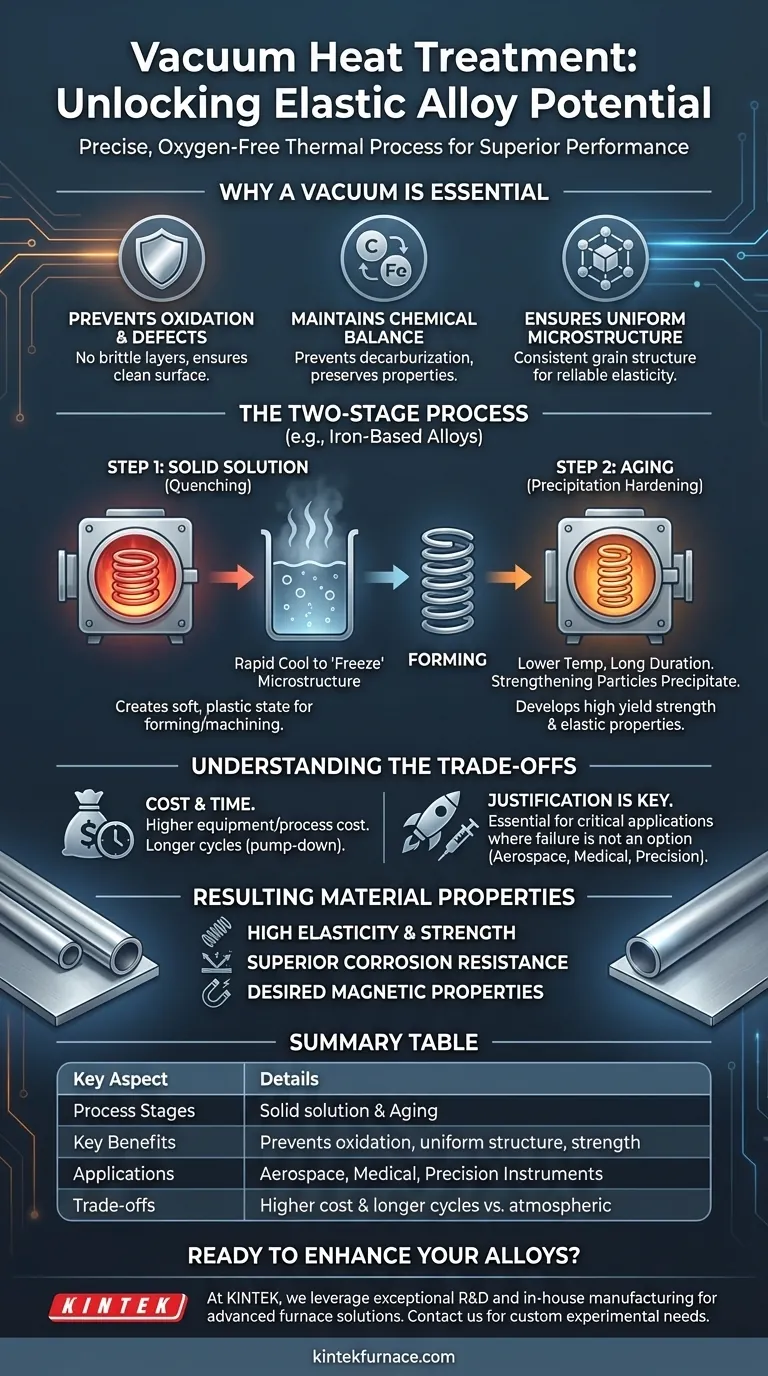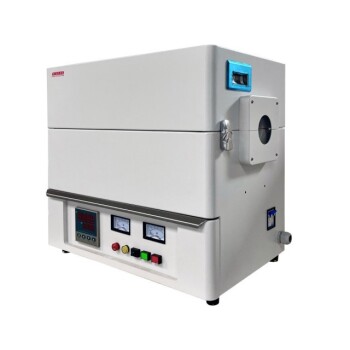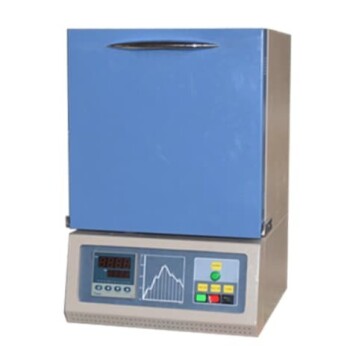Vacuum heat treatment is applied to elastic alloys through a precise, multi-stage thermal process conducted in an oxygen-free environment. For many of these alloys, this involves a solid solution treatment to create a workable microstructure, followed by a separate aging process to develop the final high-strength and elastic properties required for demanding applications.
The core purpose of using a vacuum is not merely to heat the metal, but to protect its chemical and structural integrity. It prevents surface oxidation and decarburization at high temperatures, which is the only way to ensure the alloy achieves its full, engineered potential for elasticity, strength, and reliability.
Why a Vacuum is Essential for Elastic Alloys
Treating high-performance elastic alloys in a standard atmospheric furnace would compromise their properties before they are even formed. The vacuum environment provides critical safeguards.
Preventing Oxidation and Surface Defects
At the high temperatures required for heat treatment, oxygen reacts aggressively with the alloy's surface. This creates a brittle, oxidized layer that degrades mechanical performance and corrosion resistance. A vacuum furnace removes virtually all oxygen, ensuring a clean, bright, and uncompromised surface.
Maintaining Precise Chemical Composition
Elastic alloys derive their unique properties from a very specific and tightly controlled chemical balance. Atmospheric heating can cause decarburization (loss of carbon), which fundamentally alters the material's properties. The inert vacuum environment prevents these detrimental chemical reactions.
Ensuring Uniform Microstructure
Vacuum furnaces provide exceptionally uniform heating and controlled cooling. This consistency is critical for producing a homogenous grain structure throughout the component, which translates directly to predictable and reliable elastic performance.
The Two-Stage Process: An Example with Iron-Based Alloys
For many elastic alloys, particularly iron-based types, the vacuum heat treatment process is a carefully orchestrated two-part procedure.
Step 1: Solid Solution Treatment (Quenching)
The alloy is heated to a high temperature within the vacuum, causing its various elemental components to dissolve into a uniform solid solution. It is then rapidly cooled, or quenched. This "freezes" the microstructure in a soft, highly plastic state, making it easy to form or machine into its final shape.
Step 2: Aging (Precipitation Hardening)
After forming, the component is returned to the vacuum furnace for a lower-temperature, long-duration "aging" treatment. This controlled heating cycle allows microscopic strengthening particles to precipitate within the alloy's grain structure. This step develops the high yield strength and superior elastic properties the material is known for.
Understanding the Trade-offs
While vacuum heat treatment offers superior results, it's essential to understand its position relative to other methods.
Equipment and Process Cost
Vacuum furnaces are a significant capital investment and are more complex to operate and maintain than conventional atmospheric furnaces. This translates to a higher processing cost per part.
Cycle Time
The process includes an initial pump-down phase to create the vacuum, which can add time to the overall treatment cycle compared to atmospheric heating.
Justification is Key
The higher cost and complexity are justified for high-performance applications where failure is not an option, such as in aerospace, medical devices, or precision scientific instruments. For less critical components, the benefits may not outweigh the added expense.
The Resulting Material Properties
Properly executing this process unlocks the material's peak capabilities.
High Elasticity and Strength
The primary goal is achieved: a material that can endure significant elastic deformation and return to its original shape, backed by high tensile strength from the aging process.
Superior Corrosion Resistance
By preventing surface oxidation during treatment, the component retains the inherent corrosion resistance of the base alloy. A clean, non-reactive surface is the first line of defense against environmental degradation.
Desired Magnetic Properties
For many applications in instrumentation and electronics, specific magnetic characteristics (such as being non-magnetic) are critical. Vacuum treatment preserves this precise material property without introducing impurities that could alter it.
Making the Right Choice for Your Goal
Deciding on vacuum heat treatment is a strategic choice based on your final objective.
- If your primary focus is maximum performance and reliability: Vacuum heat treatment is the definitive standard for developing the full potential of elastic alloys, especially for critical parts in aerospace or precision instruments.
- If your primary focus is material formability: Leverage the initial solid solution treatment step, which creates a highly plastic state ideal for shaping components before the final strengthening and aging process.
- If your primary focus is managing costs for less critical components: You must weigh the superior properties and reliability gained from vacuum treatment against its higher cost compared to simpler atmospheric methods.
Ultimately, using a vacuum environment is a strategic decision to protect the alloy's integrity and unlock its engineered properties without compromise.
Summary Table:
| Key Aspect | Details |
|---|---|
| Process Stages | Solid solution treatment (quenching) and aging (precipitation hardening) |
| Key Benefits | Prevents oxidation/decarburization, ensures uniform microstructure, improves strength/elasticity |
| Applications | Aerospace components, medical devices, precision instruments |
| Trade-offs | Higher equipment cost and longer cycle times vs. atmospheric methods |
Ready to enhance your elastic alloys with precision vacuum heat treatment? At KINTEK, we leverage exceptional R&D and in-house manufacturing to provide advanced high-temperature furnace solutions like Muffle, Tube, Rotary, Vacuum & Atmosphere Furnaces, and CVD/PECVD Systems. Our strong deep customization capability ensures we meet your unique experimental needs, delivering superior performance for critical applications in aerospace, medical, and more. Contact us today to discuss how we can bring reliability and efficiency to your lab!
Visual Guide

Related Products
- Vacuum Heat Treat Furnace with Ceramic Fiber Liner
- Vacuum Heat Treat Sintering Furnace with Pressure for Vacuum Sintering
- Vacuum Heat Treat Sintering Furnace Molybdenum Wire Vacuum Sintering Furnace
- Small Vacuum Heat Treat and Tungsten Wire Sintering Furnace
- Vacuum Heat Treat Sintering and Brazing Furnace
People Also Ask
- What is the heat treatment in a vacuum furnace? Achieve Superior Metallurgical Properties
- How does a vacuum furnace prevent heat transfer and contamination? Achieve Ultimate Material Purity
- How does vacuum heat treatment improve mechanical properties of metals? Enhance Strength and Durability
- Where are vacuum furnaces used? Critical Applications in Aerospace, Medical, and Electronics
- How do custom vacuum furnaces address industry-specific challenges? Tailored Solutions for Aerospace, Medical & Energy



















